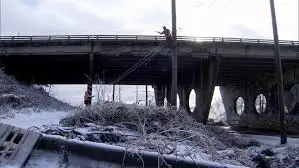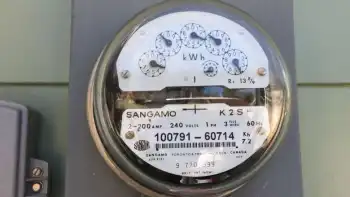Wind blows less when wind power is needed most
By McClatchy Tribune News
High Voltage Maintenance Training Online
Our customized live online or in‑person group training can be delivered to your staff at your location.

- Live Online
- 12 hours Instructor-led
- Group Training Available
It's not much - barely 1 percent of the peak electricity demand on a typical Monday for the Electric Reliability Council of Texas, operator of the transmission grid for about 75 percent of the state. But it's about what is expected from the state's wind-power industry, by far the nation's largest, during the dog days of summer, when temperatures climb but wind speeds dip on the West Texas plains.
"In general, wind's peak energy does not coincide with peak electricity demand. It's not a good match," said Andy Swift, director of the Wind Science and Engineering Research Center at Texas Tech University in Lubbock.
That's not to say wind power isn't needed, he quickly added. "It's something we as a state and a nation need to say focused on," Swift said. When it comes to electricity, Texas uses more than any other state. Monday's peak demand of more than 62,000 megawatts easily outstrips California's record of about 53,000 megawatts. And the state generates more wind power than any other.
Greg Wortham of the West Texas Wind Energy Consortium in Sweetwater, said about 6,000 megawatts of wind-power capacity is installed statewide, more than double No. 2 California. The problem is, the wind doesn't blow all the time, so wind power fluctuates hour-to-hour and day-to-day.
According to Cambridge Energy Research Associates, Texas' wind turbines churn out about 38 percent of their capacity on average during the year. That's still the best in the nation, just ahead of the Great Plains at 37 percent and well ahead of the Upper Midwest, the weakest at 27 percent.
And August is the worst month, Cambridge Energy said in a February report on renewable energy.
The nation's wind farms operated at only about 20 percent of capacity during August 2006, it said. On Monday, Texas' wind farms were producing between 600 megawatts and 700 megawatts from 4 to 5 p.m., typically the peak demand period in the state.
That's just over 10 percent of capacity. But after 6 p.m., generation had jumped to about 850 megawatts. "That's about what we should expect this time of the year," said Mike Sloan, president of Virtus Energy Research Associates in Austin, which works with the renewable-power industry. He said wind is an important part of the state's energy mix, especially in reducing emissions from coal- and natural gas-fired plants, and has proven to be economical, given the relatively high natural gas prices seen this year.
Wortham concurred. "If it keeps the lights on, it's invaluable," he said. He said a bigger issue is making sure there are enough transmission lines to get wind-generated electricity from West Texas to the Metroplex and other population centers.
In July, the Public Utility Commission approved a $5 billion plan to build thousands of miles of transmission lines to do just that. Those lines will connect planned wind farms in the Panhandle and elsewhere to the state's grid. Still, the intermittent nature of wind also makes those lines relatively expensive, at least compared to a fossil-fuel or nuclear plant that operates at least 90 percent of the time.
During testimony to the PUC, Jeff Pollock, an expert representing a gr up of industrial customers, told commissioners that "higher transmission and (other) charges associated with new wind generation will increase the electricity costs paid by all consumers." The transmission plan approved by the PUC will cost the average residential customer about $4 a month, the commission estimated.
That could be offset by lower electricity prices.











